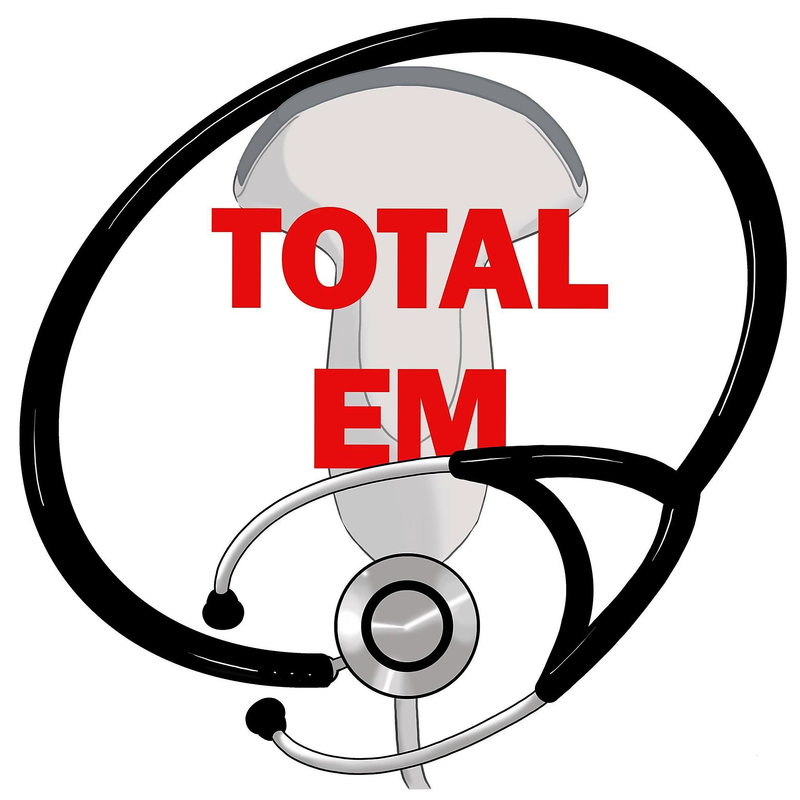|
We are joined by Tyler Christifulli, a well experienced critical care paramedic and host of the Lifestar Podcast, to discuss a proposed ventilation strategy. It is worth listening to his original podcast first to get a complete picture. I would also recommend listening to Scott Weingart's Dominating the Vent lectures on his EmCrit website if you are not very familiar with ventilator management in general. A warning in advance, there is some cursing in the podcast.
It is vital that all of us: PAs, NPs, physicians, nurses, and paramedics know how to manage a ventilator without relying on backup. Know your ventilators you may use and talk to RT (if they exist in your setting) to better understand the intricacies of these machines. In all reality, all of us should know every single piece of equipment we have access to. It is necessary to be the best clinician possible. With that said, ventilator management is one of the most important but underused skills that we have, especially in the rural setting where there is often an even greater need to be proficient ourselves.
As a quick refresher, there are two main ventilator strategies: injury and obstructive. In general, when a patient has asthma or COPD and crashing, the ventilation strategy falls into the obstructive pathway as seen in this basic handout review. However, what do you do when you have a patient with severe asthma or COPD but with significant lung injury pathology? Tyler explains this situation more fully in Podcast 23 of the Lifestar Podcast (again, listen to the podcast first if possible). He calls this a hybrid of patient and explaining that although less common, is a difficult and dangerous patient. Understanding that there are limitations to this approach, Tyler wanted to open up a dialogue to a case that is rarely discussed currently. However, we must understand that with obstructive patients should actually be further subdivided into its causes with loss of parenchymal elasticity (such as with emphysema) and decrease in airway caliber (such as asthma). Think of the loss of parenchymal elasticity as like blowing into a plastic bag versus a balloon with emphysema being the plastic bag and the balloon being normal lung. The main reason we are trying to avoid PEEP in the obstructive patient is to avoid what is called auto PEEP orintrinsic PEEP (also called air trapping). This can be a dangerous event that can even lead to a patient crashing and going into cardiac arrest while on the ventilator. With that understanding, we can use PEEP in these patients with very close monitoring and a specific plan in mind. Tyler explains that in a paper including an analogy of a waterfall, we can understand that if we misuse PEEP it can be dangerous, but we can better control it if done correctly. Essentially, if you are increasing the PEEP and your peak inspiratory pressure is increasing then you are probably making the auto PEEP worse. Now that you have figured out the happy place to have this PEEP safely and the patient is being continually monitored in an appropriate manner, the next part is transferring that patient. In EMS, this is taking the patient to the desired facility but this can also happen from ED to EMS for a transfer. Some will want to "feel" the compliance of the patient by bagging. In this case, do not do it! What happens is that the patient will lose that delicately placed PEEP and the process will have to start again potentially at the risk of a hypoxemic event. Instead, clamp the endoctracheal tube while the patient is on the inspiration phase of the mechanical ventilation cycle and then transfer to the new vent. This should be brief, but can have an important difference for that patient. Remember that if your patient does start to have ahypoxemic event or they are crashing on the ventilator go through your DOPES mnemonic. If they are crashing, get them off the ventilator even if using this potential strategy as this patient could have serious pathology which may be a result. The last part people may think of with this proposed strategy that may need to be addressed is regarding the level of sedation. Should a patient needing this intensive of management have complete sedation and not be allowed to breathe over the ventilator? This suggests the potential of even using long-acting medications such as rocuronium (after proper analgesia and sedation of course). Keep in mind that there can be other causes why the patient is still fighting the ventilator when they would normally be completely sedated such as obstruction of a Foley catheter or blood sugar problems. What are your thoughts on this proposed strategy? Have you tried something similar? Please remember, this is a strategy that has not yet been fully tested and we highly recommend further investigation and discussion before adoption. As with any other podcast, this blog or podcast should not be used in any legal capacity whatsoever, including but not limited to establishing “standard of care” in a legal sense or as a basis for expert witness testimony. No guarantee is given regarding the accuracy of any statements or opinions made on the podcast or blog. Let us know what you think by giving us feedback here in the comments section or contacting us on Twitter or Facebook. Remember to look us up on Libsyn and on iTunes. If you have any questions you can also comment below, email at [email protected], or send a message from the page. Please check our bandwidth sponsor, FunnyRx, too. We hope to talk to everyone again soon. Until then, continue to provide total care everywhere.
0 Comments
Leave a Reply. |
Libsyn and iTunesWe are now on Libsyn and iTunes for your listening pleasure! Archives
August 2022
Categories |
||||||


 RSS Feed
RSS Feed